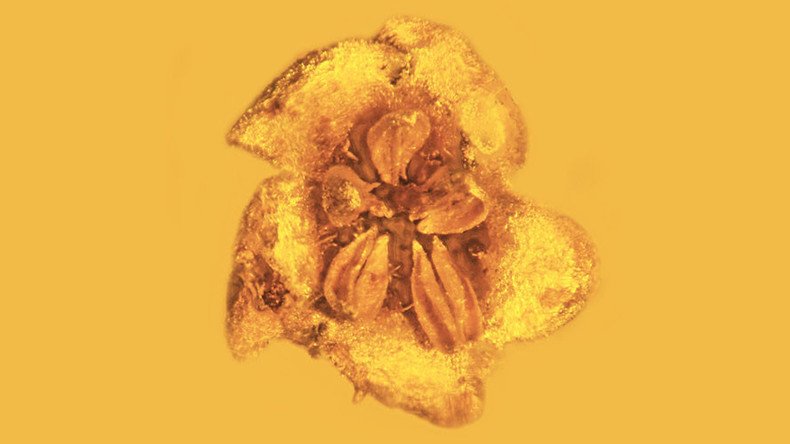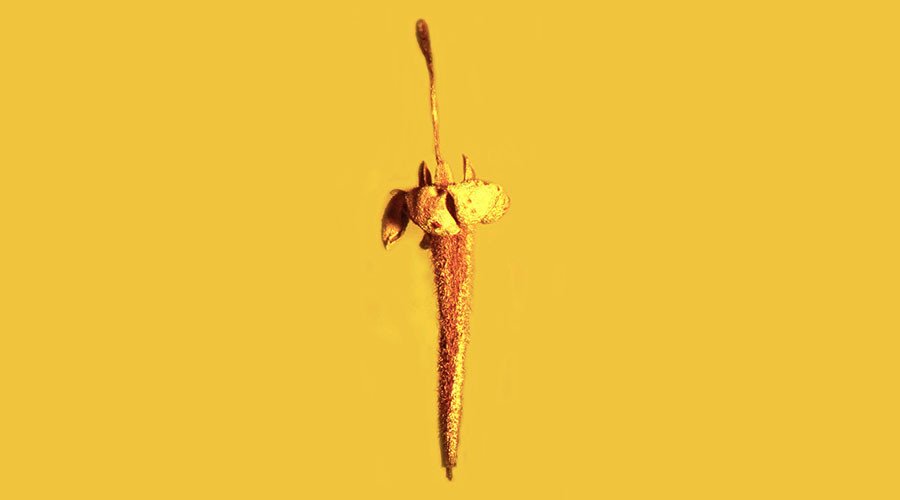15-million-year fossilized flowers discovered preserved in amber (PHOTOS)

Biologists have announced the discovery of the first-ever fossil specimens of flowering plants, possibly 15 million years old, that have been preserved in amber all this time.
The fossil “asterids” are the antecedent to a staggering lineage of over 80,000 species, including the potato, tomatoes, tobacco, coffee, and the deadly poison strychnine.
In a paper published on Monday in Nature Plants, biologists explained that the flowery discovery was made in a Dominican Republic cave along with a treasure trove of insects, all preserved in amber. The discovery, dating back to 1986, yielded 500 fossils and led to decades of research on the fossilized insects, but little attention was paid to the flower until now.
CHUNKS OF AMBER WITH FOSSIL FLOWERS WERE DESCRIBED BY BIOLOGISTS AS SPECIE OF EXTINCT PLANT. pic.twitter.com/FiDUYvsvTL
— OSCAR FREDY POSSO VI (@osfpovi) February 16, 2016
“The specimens are beautiful, perfectly preserved fossil flowers, which at one point in time were borne by plants that lived in a steamy tropical forest with both large and small trees, climbing vines, palms, grasses and other vegetation,” said George Poinar, co-author of the study and professor in the College of Science at Oregon State University. Poinar is one of the world’s experts on plant and animal life forms preserved in amber.
Scientists were able to date the flowers to as early as 15 million years ago only by examining other life forms preserved in the amber.
Asterids were among Earth’s most important and diverse plants, “with 10 orders, 98 families, and about 80,000 species,” according to the biologists. They represent about one-third of all the Earth’s flowering plants.
“Specimens such as this are what give us insights into the ecology of ecosystems in the distant past,” Poinar said. “It shows that the asterids, which later gave humans all types of foods and other products, were already evolving many millions of years ago.”

Poinar thought the flower might be from the genus Strychnos and sent it to Lean Struwe, professor of botany in Rutgers University’s School of Environmental and Biological Sciences.
While beautiful in form and shape, the asterids also have a dark side. One of the ancient species linked to the Strychnos genus is the strychnine tree, which features a deadly toxin, and the two fossilized flowers are from the dark side of the asterid family.
Lucy’s neighbor? New fossil of unknown human ancestor found in Ethiopia [VIDEO] https://t.co/rxMtbI6D13
— RT America (@RT_America) May 29, 2015
Co-author of the study Lean Struwe, is an expert on plants in the strychnine family, Loganiaceae. She is not certain if the fossilized flower was poisonous, but she is certain the flower is a new species and they’ve named it Strychnos electri. She said it resembles many of the living relatives in the Strychnos genus, which includes roughly 2,000 species, several of which are poisonous.
“The characteristics mostly used to identify species of Stychnos are flower morphology, and that’s what we luckily have for this fossil,” Struwe said in a release about the study.
Dinosaur discovered in Canada may have ‘halo’ of horns [VIDEO] https://t.co/Tr01kW4342@LindsayFrance@SimoneReportspic.twitter.com/lTZr3jaGS4
— RT America (@RT_America) July 9, 2015
Strychnine has been used for decades as a pesticide, and is often the deadly component of rat poison. It has also been used in blow-gun weapons.
“Species of the genus Strychnos are almost all toxic in some way,” Poinar said. “Each plant has its own alkaloids with varying effects. Some are more toxic than others, and it may be that they were successful because their poisons offered some defense against herbivores. Today some of these toxins have been shown to possess useful and even medicinal properties.”
The researchers said the discovery of these two fossil flowers suggest that many other related plant families could have evolved in the Late Cretaceous in tropical forests.












